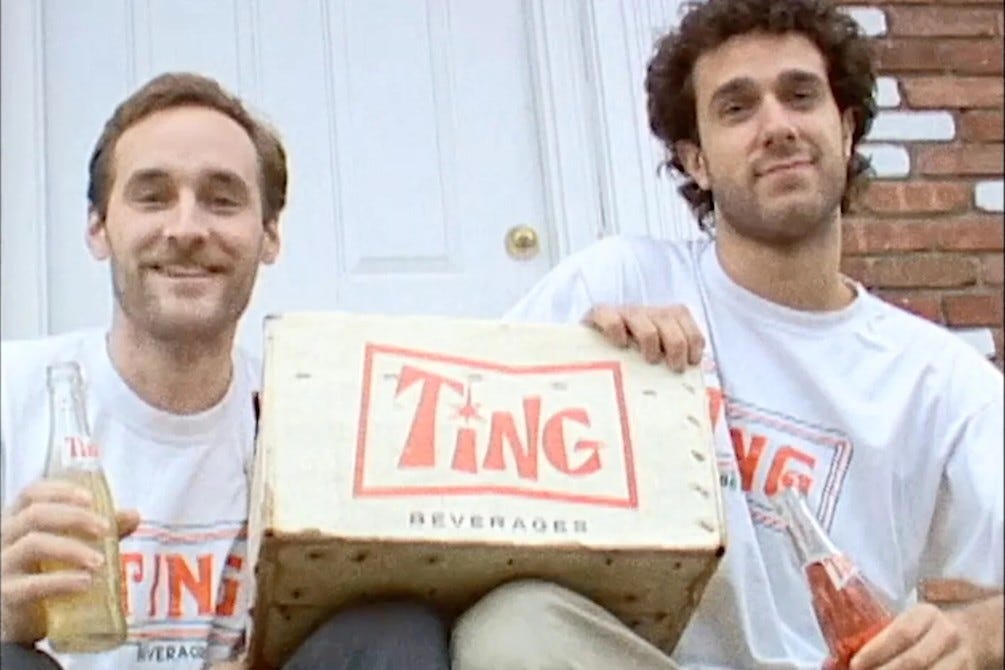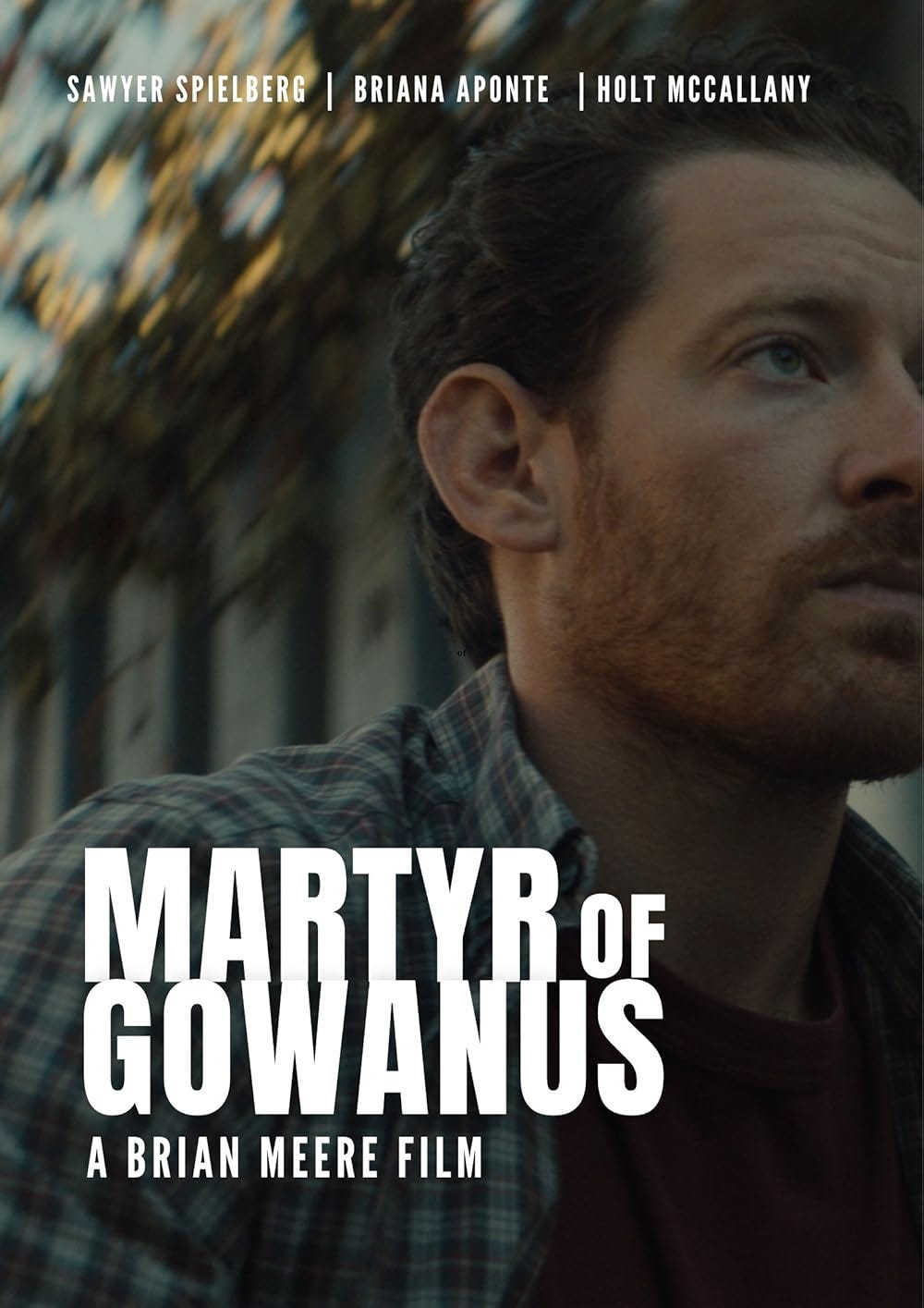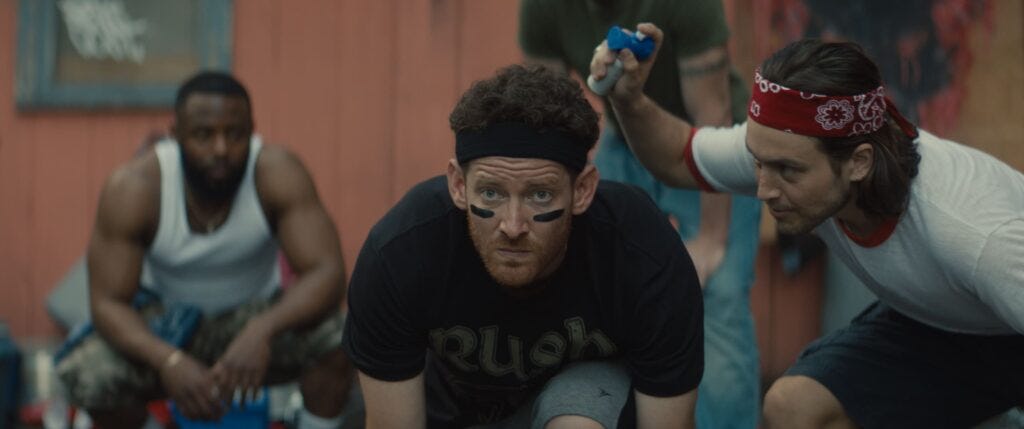Taste The Revolution: Mahershala Ali's first film role finally released, and Martyr of Gowanus
New films at the Big Apple Film Festival
Taste the Revolution REVIEW
Imagine you have 130 hours of unreleased footage starring Mahershala Ali in his first film role from 2001. In 2017, he wins an Oscar for Moonlight, followed by Green Book in 2019. Time to find a great editor or two!
On closing night, I got a blast of 90s/turn-of-the-century nostalgia with Daniel Klein’s “documentary” Taste the Revolution, a send-up of those who take their views a little too seriously.
A grainy 16mm opening shot introduces us to Mahershala Ali’s Mac Laslow walking slowly while holding a bomb. A sudden freeze frame and the “documentary” filmmaker’s VO tells us that this is the worst day of Mac’s life, before flashing back to the setup, the best day of his life...
We are introduced to the founders of a late-nineties anti-capitalist revolutionary group through VHS and film footage:
Twenty-five years ago, two filmmakers followed revolutionary Mac Laslow and college students organizing a "World Summit" to counter generational apathy through free food, booze, and radical politics.
Ali is entrancing in his first long-lost film role. He and the director were both studying at NYU at that time, and he is perfect as Mac, the charismatic orator of the film’s revolutionary group. The cadence of his speeches draws you in, and the close nature of the video shooting creates an intensity of raw emotions. He is hilarious in his subtlety as he collects checks from his rich parents’ friends at their Hamptons house, raising $100K for the revolution.
Then, following a botched protest against a strip mall that becomes a riot looting a sporting goods store, he manages to twist himself in knots to justify how the chaos can be used to raise awareness for the cause. The crowd cheers him on with rackets, football helmets, and other booty in tow.
The plot breakdown according to IMDb:
In August of 2001, a group of disillusioned college students calls a world summit to counter apathy of their privileged generation and unite a splintered activist front. Lured by the promise of free food and booze, hundreds of young people descend upon a borrowed country estate to drink, use drugs, have sex and swap politics. Anticipating an event of historical significance, two aspiring filmmakers solicit a grant from a soft drink company to document the event as it unfolds. Their footage vividly illustrates the different agendas and perspectives in attendance. As the organizers sink deeper into the logistical nightmare of managing a modern revolution the filmmakers bear witness to the group's loss of confidence in their ability to change the world.
Every character in the film stands out, the 90s were just like that. I had such a blast with the haircuts and attitudes. And it’s always great to watch a film where nobody has a phone. But what makes it really work is the VHS/mini-DV shooting.
This film was made back when Orwell’s Animal Farm was required reading. The tone is tongue-in-cheek, and the sharp editing expertly juxtaposes the self-serious leaders with the drunken-stoner followers, who begin to resent those who live in the barn-house while they are in the yard.
I was shocked when my students started asking advice about shooting their thesis films on VHS or DV. I had been teaching them on 4K cameras, and they found the precision sterile and boring.
I used to hate that I was stuck with such low-quality cameras; back in the 90s my friends and I shot so many films on VHS, trying desperately to compete with what we saw in theaters, shot on 35mm! I was so happy when newer cameras came along that offered more nuance and variability, but looking back, I can now find beauty in that rough low resolution/soft footage. And this film looks amazing. I can’t imagine it in higher quality.
Taste the Revolution’s visual authenticity comes from the messy handheld video format. 25 years later, it feels bold and striking; everything old is new again.
Martyr of Gowanus REVIEW
What do you do with all your impotent rage? Do you try to help yourself or others? Martyr of Gowanus explores neighborhood drama against the backdrop of the paradigm-shifting months surrounding the September 11th terrorist attacks.
Sawyer Spielberg plays Gavin Macklin, a 30-year-old house painter who gets into a feud with a local teenager who has stolen his fishing rod. When he confronts the boy, the kid’s older gang-adjacent cousin beats him up. Next, he falls in love with the thief’s sister, Mercedes, who agrees to a date but is turned off by his drunken advances. He falls into despair but is roused by the airplane attacks, replacing self-sabotage with misdirected anger. He wants revenge, but can’t find the right target. A dangerous place for a man to hide.
Brian Meere’s narrative feature debut follows a career in documentary and unscripted producing, which undoubtedly helped create the authentic dynamic between characters from different walks of life. Gavin is the interloping white guy who started colonizing Brooklyn’s Hispanic and Black neighborhoods in the 1990s, but thankfully, the movie doesn’t waste our time in simple-minded diatribes against gentrification.
The film’s power comes from the slice-of-life narrative, where people interact and react to each other based on actions instead of vague ideas. “I wanted it to be a neighborhood story of an unlikely friendship, set against the backdrop of an immense historic event,” Meere said at the talk back.
The film’s Dominican characters were based on people the director had worked with and lived with in his doc work, citing a teenage baseball team he embedded with for a project. The drama feels real and earned because he takes the time to set up the stakes and help us care.
I hadn’t watched any September 11th footage in decades, but every shot of those burning towers has been seared into my memory, and the editing of the attack into the narrative started to give me heart palpitations, causing a mini panic attack. I got over it, but was amazed by how immediately I was pulled back into the terror of that day.
Taking those horrible moments out of the context of “news” and turning them into lived experience was almost too much to bear, but necessary for the second-half plot development. This is what gets the protagonist to reject his self-involved life and try to be helpful.
The only problem is that when we step out of our comfort zone to help, things often go sideways.
Gavin expresses what many Americans felt at the time: blind fury that led to arrogant actions. We dug our country into endless wars and used the excuse to enrich the most unscrupulous among us (looking at you, Haliburton et al).
Gavin becomes suspicious of his local deli’s Muslim owner, whom he starts to conflate with the photos of the hijackers. He admires the Americans who are enlisting to fight, but feels too cowardly and uses his age as an excuse to avoid the military himself. He needs to find an outlet for these feelings, and I won’t spoil the film, but the word “martyr” does appear in the title.
I look forward to the film continuing to play festivals and finding distribution.













Such great reviews! Both films sound fantastic!